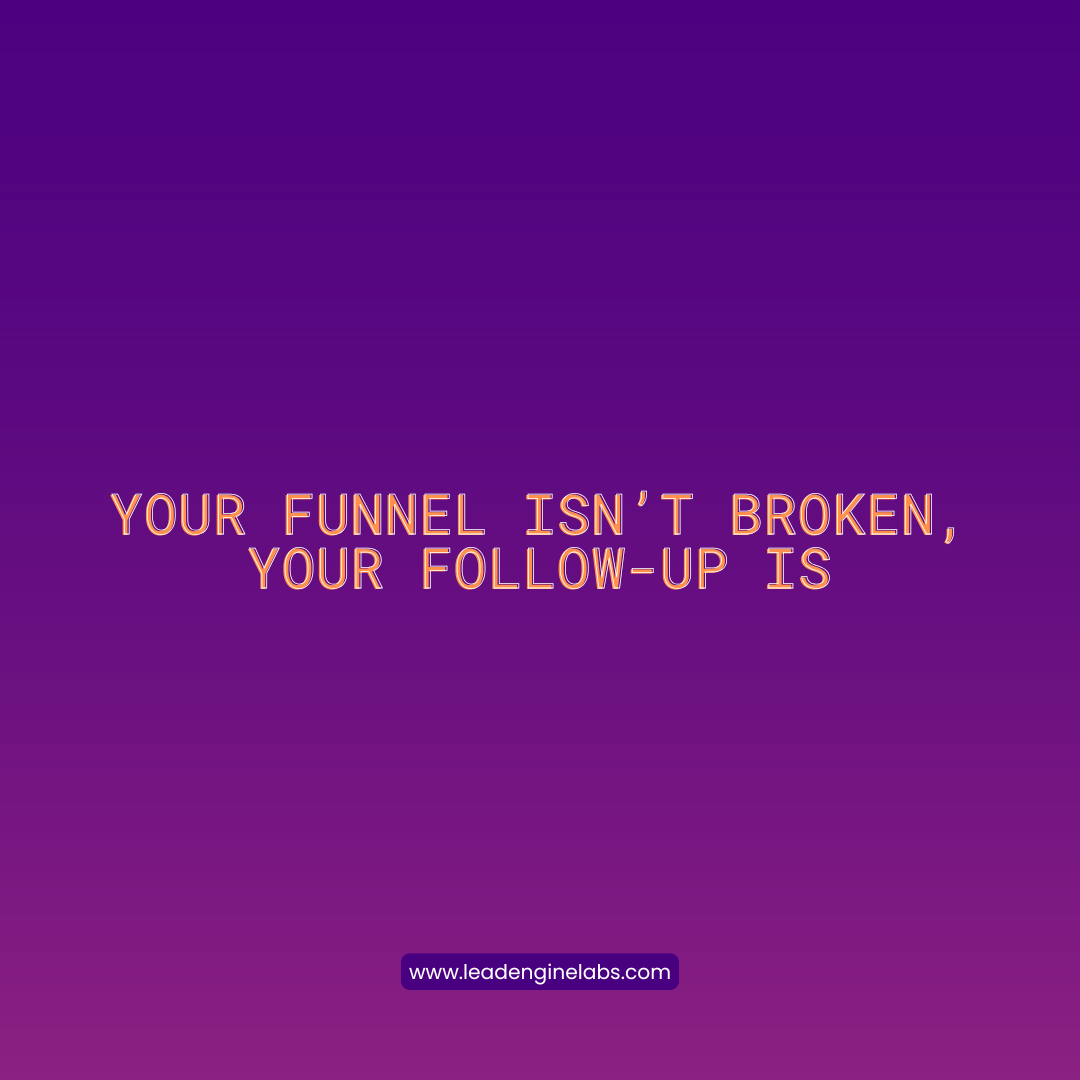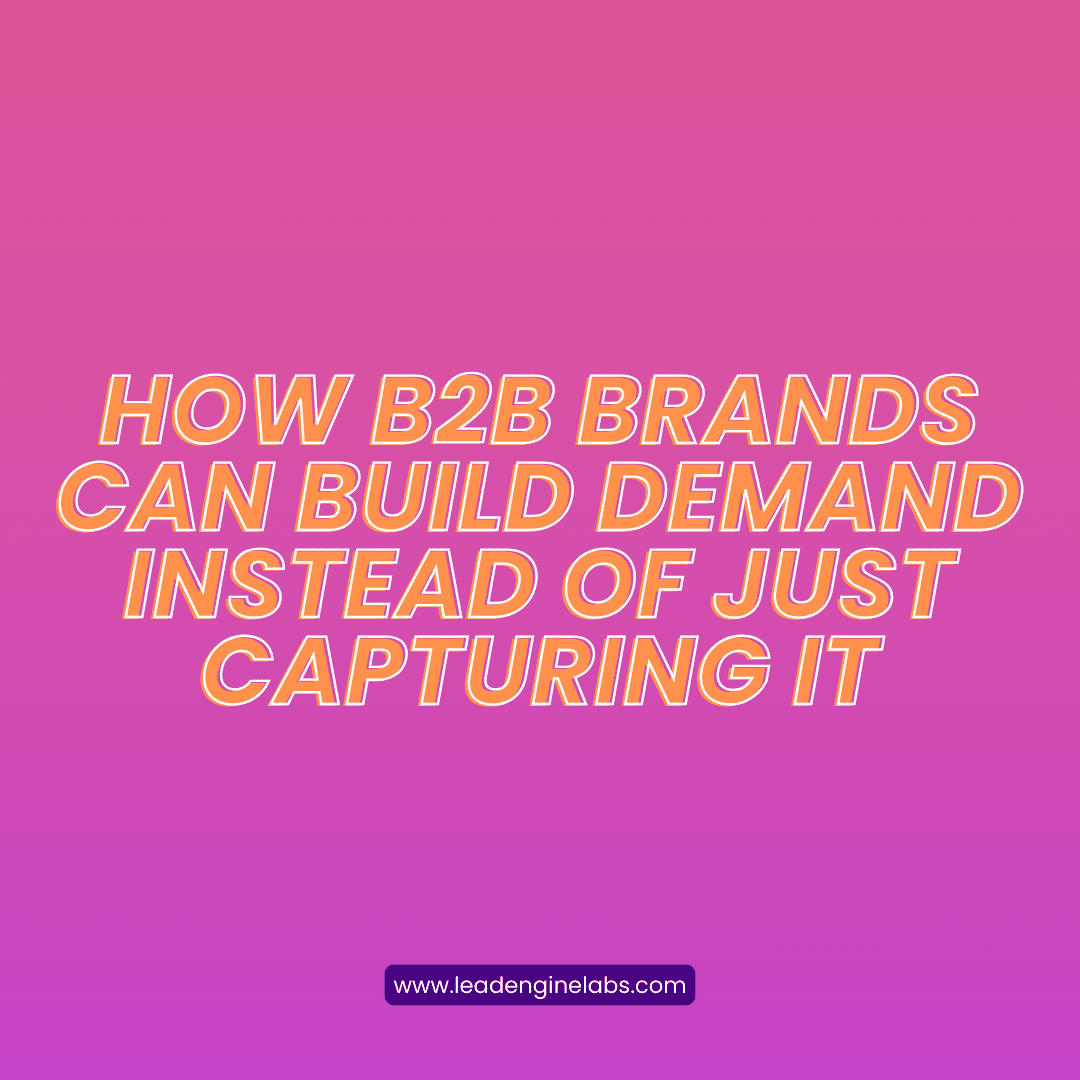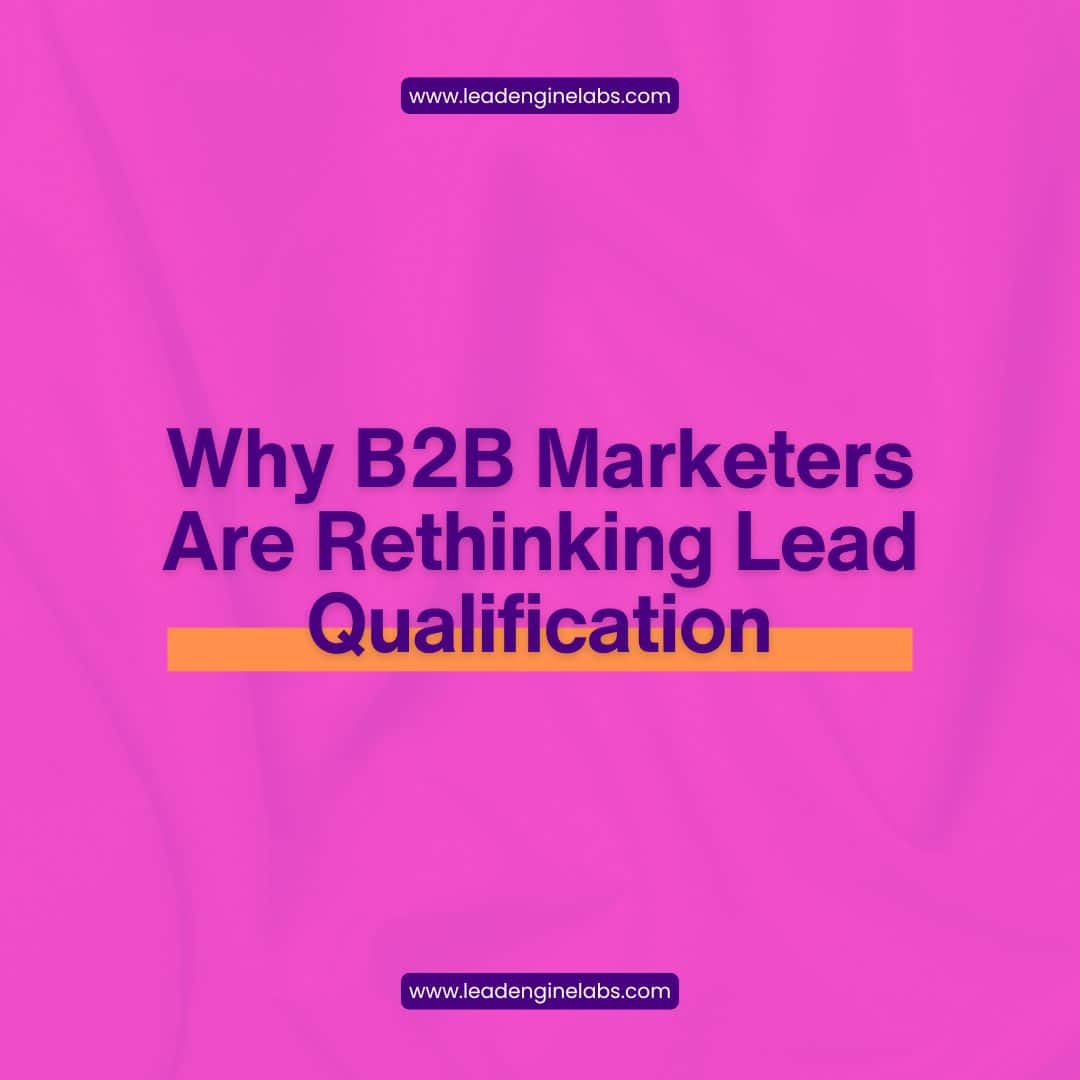If your leads go cold after the first touch…
If deals stall right after discovery…
If your “qualified” prospects suddenly ghost…
Your funnel’s not the problem.
Your follow-up is.
Most marketing teams obsess over top-of-funnel. They map out the landing page, the form, the targeting. They celebrate when the lead comes in.
But that’s not the win. That’s just the beginning.
In B2B especially, what happens after the first touch determines if a lead becomes a pipeline, or just another closed/lost.
This post breaks down why most follow-up systems fail, how it kills momentum, and what to build instead.
Why “More Content” Isn’t the Answer: The Shift From Content Volume to Content Velocity
The Follow-Up Fallacy
Here’s how the typical flow goes:
- Lead downloads a guide or fills out a contact form.
- Auto-response email fires.
- SDR waits a day (or two) to reach out.
- Nothing happens.
- “Leads are bad.”
Sound familiar?
The truth is: most leads die because there’s no real follow-up system.
No personalization.
No strategic cadence.
No relevance tied to their context.
No urgency to move.
And that’s not a lead issue. That’s a business system issue.
Why First Touch Doesn’t Convert (And That’s Normal)
Here’s the part no one likes to hear:
You’re not entitled to a conversion just because someone filled out a form.
Most people:
- Aren’t ready to buy
- Are just browsing
- Need internal alignment
- Need budget approvals
- Need time
Expecting a lead to convert immediately is like proposing on the first date and wondering why they didn’t say yes.
So instead of hoping they come back on their own, you need to guide them, consistently and confidently.
That’s what follow-up is for.
The 3 Hidden Reasons Follow-Up Breaks Down
Let’s stop blaming “bad leads” and call out what’s really going wrong:
1. Your Follow-Up Is Too Slow
Speed kills. Or in this case, lack of speed does.
By the time your rep reaches out:
- The prospect has moved on
- The context is cold
- The interest is gone
If a lead hits your CRM and you’re waiting hours or days to engage, you’re losing deals before they begin.
Solution: Automate the first move—then follow with human input fast. Ideally within 5–15 minutes.
2. It’s Not Personal or Contextual
If your follow-up looks like this:
“Hey [FirstName], saw you downloaded our guide. Let me know if you have questions.”
…it’s over before it starts.
Prospects don’t need check-ins. They need relevance.
- Reference the exact page or content they engaged with
- Mention their company or role
- Tie the follow-up to their current friction or goal
Solution: Use merge fields, smart snippets, or short Looms that show you did your homework. Even a little context goes a long way.
3. Your Cadence Has No Strategy
One follow-up email isn’t a system. Neither is a random call three days later.
A real cadence is:
- Multi-channel (email, LinkedIn, voicemail, text)
- Time-structured (days 1, 3, 5, 7, 14, etc.)
- Outcome-driven (designed to advance the deal, not “just check in”)
Solution: Build 8–12 touch sequences that move the conversation forward—every time.
How Lead Engine Labs Fixes the Follow-Up System
We’ve rebuilt follow-up for B2B companies that want momentum—not just leads sitting in a spreadsheet.
Here’s the process we use:
1. Map Follow-Up to Funnel Stage
Not all follow-up should look the same. You need tailored approaches based on where the lead is:
- Top of Funnel (TOFU)
- Send context-based education tied to the asset they downloaded
- Ask qualifying questions that feel consultative
- Offer a next step without pressure
- Send context-based education tied to the asset they downloaded
- Middle of Funnel (MOFU)
- Introduce social proof (mini case studies, client wins)
- Offer quick-win strategy calls or audits
- Highlight product differentiators relevant to their pain
- Introduce social proof (mini case studies, client wins)
- Bottom of Funnel (BOFU)
- Reconfirm urgency and outcome alignment
- Address objections proactively
- Share pricing context and simple onboarding plans
- Reconfirm urgency and outcome alignment
Each stage gets its own follow-up playbook.
2. Leverage the 3-Layered Follow-Up Stack
We build systems using three layers of follow-up:
Layer 1: Trigger-Based Automation
- Instant lead alerts
- Personalized email or text on form fill
- Auto-scheduled call slots via Calendly or Chili Piper
Layer 2: SDR Sequence (Semi-Personal)
- LinkedIn touchpoints
- Short personalized emails
- Contextual value drops based on behavior or persona
Layer 3: Human-First Follow-Up
- Loom videos walking through their site or issue
- Voice notes on LinkedIn
- Custom offers or fast audits
This mix lets us scale relevance without burning out the sales team.
3. Create Urgency Without Hype
One reason follow-up falls flat: it has no tension. No clear reason to move now.
We don’t manufacture fake scarcity. Instead, we build real urgency from real stakes:
- What’s the cost of staying stuck?
- What’s at risk if they delay?
- What opportunity do they lose by waiting?
And we surface that with questions, not pressure.
Example:
“What’s the revenue impact if this [problem] goes unresolved another 90 days?”
“Are you seeing the same friction across other teams—or is this isolated to [X]?”
This shifts the conversation from features… to business pain.
The Metrics That Actually Matter
Most people measure follow-up by:
- Number of touches
- Open rates
- Response rate
We care about:
- Speed to first touch
- Lead-to-convo conversion rate
- Deal progression
- Time from opt-in to meeting
- Revenue per follow-up touch
Because again—movement beats motion.
The Mindset Shift: Follow-Up Is the Funnel
If your team separates “lead gen” from “follow-up,” you’ve already lost momentum.
Follow-up is where the sale happens.
Follow-up is where clarity forms.
Follow-up is where trust builds.
Without it, your funnel is just a collection of unclaimed intent.
Conclusion: Stop Blaming the Funnel
Your funnel isn’t broken.
It brought in the lead.
It sparked the interest.
It did its job.
But your follow-up?
- Was late
- Was vague
- Was weak
- Was missing entirely
Fix that, and watch what happens to your pipeline.
At Lead Engine Labs, we build systems that don’t just collect leads they convert them.
If you want follow-up that fuels real pipeline motion, let’s talk.





